Reviews
E tu vivrai nel terrore—L’aldila
Lucio Fulci
Italy, 1981
Credits
Review by David Carter
Posted on 20 October 2010
Source Grindhouse DVD
Categories Lucio Fulci’s Gates of Hell
Lucio Fulci’s follow-up to Zombi 2 was City of the Living Dead1, the first film in his “Gates of Hell” trilogy. Briefly, City of the Living Dead concerns a New York psychic, Mary, who along with reporter Peter investigates a small New England town where a priest’s suicide has opened a portal to Hell. The similarities between the Mary/Peter duo and Zombi 2’s Anne/Peter are not coincidental and the basic plot - two strangers thrown together to face the apocalypse - is also shared by both films. Zombi 2 was inventive for a zombie film but certainly had scenes that marched lock-step toward obvious conclusions, a problem Fulci would rectify in City of the Living Dead by dispensing with narrative almost entirely. Fulci would drift the farthest from narrative with The Beyond, however. Technically a sequel to City of the Living Dead, The Beyond is in some ways a remake of both that film and Zombi 2 in that it depicts localized supernatural occurrences spiraling out to become a global apocalypse.
A sepia-tinted pre-credit sequence shows a group of townspeople, torches in hand, descending on the Seven Doors Hotel in 1927 Louisiana. The men move in silence as they pass an African-American porter, the man’s faced etched with fear at the sight of the lynch mob as Fulci subtly addresses racial tension. He is not their quarry tonight, however. As they slowly make their way upstairs, a waifish beauty downstairs opens a leather-bound copy of the Book of Eibon2 and begins to read a prophecy about the gates of Hell being opened. Upstairs, the mob has found their prey: a German artist named Sweick. They believe Sweick to be a warlock and after brutally beating him, they nail him to a wall in the basement3 and douse him in quicklime. Sweick dies in agony as his flesh melts away while above, the pages of the Book of Eibon burst into flames.
In the present day, Liza Merrill (City of the Living Dead’s Catriona MacColl) has inherited the Seven Doors Hotel and has begun the lengthy process of renovating the long-disused building. The hotel’s flooded basement is the most pressing of the plethora of repairs needed and Joe, the plumber, finds that the source of the leak is coming from a brick wall steadily seeping water. Joe breaks through it to find a much larger basement, extending well beyond the boundaries of the house above. There he is attacked and killed by Sweick’s corpse, which returns quickly to a lifeless state and is subsequently carried to the morgue with Joe’s body.
Meanwhile, Liza travels to New Orleans for supplies when she is impeded by the waif from the film’s opening standing alongside her dog in the center of the Lake Pontchartrain Causeway, the longest bridge in the United States. Introducing herself as Emily, the blind but still young woman warns Liza to give up the hotel or horrible tragedies will occur. Liza ignores Emily’s warnings but relates them to Dr. John McCabe, who instead of comforting her, frightens Liza more by admitting he has never heard of Emily and the house where she lives has been abandoned for fifty years. McCabe’s disbelief fades once he, too, confronts the uncanny and he and Liza must attempt to survive as the effects of the open gate spread to the whole world.
That Fulci was going for something more grandiose than his previous efforts is evident in the film’s Italian title: E tu vivrai nel terrore—L’aldila. Translating to And you will live in terror—The Beyond, this title implies that the director was not content to depict people dying in inventive ways - as he had in City of the Living Dead - but rather to show characters driven to the brink of madness by the uncanny. Thus The Beyond dispenses with the narrative style of horror and replaces it with one predicated on the absurd. The end result is that The Beyond is more Artaud than Argento.
The influence of Artaud’s Theatre of Cruelty is evident in many of Fulci’s films, but The Beyond brings it to the forefront. The chilling and brutally gory opening sequence is presented without explanation; it is only later in the film that we learn Sweick’s name and that he may be a warlock. This is one of the few elements of the film that is given an explanation at all and most events simply happen. Artaud advocated a destruction of the standard narrative style in the Theatre of Cruelty section of his The Theatre and its Double, and Fulci attempts to achieve that by eliminating most, if not all, expository information.
A debate can be had about how successful Fulci was in accomplishing this goal, but it was clearly his intent for the film. Artaud’s desire was to arrest the audience with shocking “truths” they did not want to see, whereas Fulci replaces truths with scenes of graphic horror. An example of a successful use of this technique is when an unseen chain of events leads to Joe’s wife having her face slowly dissolved by acid while in the morgue. We are not shown what caused the woman to go from a standing position to lying on the floor but are left to imagine that it was something horrifying, perhaps even more horrifying than the lingering shots of the carnage that ensues. The use of the absurd undoubtedly fails in a scene where a lightning flash during midday causes a man to fall off of a ladder while looking for the building plans for the Seven Doors Hotel. After he lands, he is attacked by a multitude of spiders and this scene reads as comic despite the litany of horrors that surround it and is rendered even more innocuous by the truly frightening image that immediately follows it: the plans of the hotel slowly disappearing from the page.
The difference between the absurd as seen in The Beyond and the oneirism of Inferno is more a question of pacing than semantics. Fulci is clearly taking inspiration from Argento’s strange house as seen in that film and Suspira, but he is approaching the subject with greater verve than Argento. The occasionally glacial pacing of Inferno is replaced with one that is unrelenting in The Beyond. Fulci spends so much time depicting the breakdown of the barrier between Earth and Hell, that we lose track of Liza at several points. This is likely by design; time is one of the key elements that Fulci plays with in the film. This is particularly true in the Emily portions, as it appears as if time is no longer flowing in a linear manner and that, somehow, Liza is meeting Emily fifty years in the past rather than in the present day. Fulci also utilizes shifting points of reference as a way to disorient and scare viewers. This is masterfully accomplished in a scene where Joe’s corpse attacks a woman; the camera’s POV rapidly shifts from the subjective views of the attacker and victim to an objective position a short distance away. In this scene, the audience is killing, being killed, and watching a horrific act. Fulci is again paying homage to Artaud by refusing to allow the audience to become complacent in how they are reading the film.
The climax of The Beyond is more pessimistic and nihilistic than that of his previous two films. Considering that they ended with a global zombie apocalypse and the literal end of the world, respectively, this is no small task. Liza and McCabe find themselves trapped in the hospital, forced to fend off waves of zombies spewing from the morgue. In addition to the zombies, McCabe is forced to shoot a young girl who has become possessed, Fulci’s camera not flinching from the sight of a child’s head exploding in a shower of gore. They believe they’ve found their salvation but the staircase they descend leads them not to another floor of the hospital but into the basement of the Seven Doors Hotel. Still frightened that they are being followed, they move towards an apparent hole in the wall emanating light and find themselves in a bleak landscape resembling the painting Sweick was working on before his murder. They turn in every direction only to see that the landscape is unchanging—east is the same as west which is the same as north and south. Too frightened to scream, Liza and McCabe are physically blinded from looking into Hell and slowly begin to disappear as if never there.
The film’s ending makes the events preceding it somewhat pointless, but in doing so, makes them all the more terrifying. Mary from City of the Living Dead was in some way connected to the events in Dunwich and even appears in the film’s doomsday prophecy and, similarly, Anne was at least tangentially related to the events of Zombi 2 through her father’s research. Liza has no connection to what is taking place in The Beyond, however. It is simply random chance - fate - that caused her to enter into the epicenter of the apocalypse. This idea that someone is “fated” to suffer a meaningless death is one of the biggest facets of Italian Nightmare Horror. Those killed in The Beyond are not special in the sense that they relate someway to what is happening nor are they in anyway responsible for the supernatural events taking place. That they could have done nothing to prevent their ultimate fates is perhaps the most horrifying aspect of The Beyond.
The Beyond was one of three horror films the prolific Fulci released in 1981, the other two being the Poe adaptation The Black Cat and the sequel to The Beyond, House by the Cemetery. Neither has received the acclaim given to what many consider to be Fulci’s masterpiece, but House by the Cemetery is certainly another effective exercise in Italian Nightmare Horror. The Beyond is a polarizing film. Like Inferno, its complexity requires a level of attention that most viewers simply are loathe to give to a horror film, especially one filled with such hyper-violent images. Those that have analyzed The Beyond more closely believe it to be among the best the horror genre has to offer, though. The conclusion of our exploration of Italian Nightmare Horror, Demons, is more easily comprehended than The Beyond but no less oneiric and terrifying.
- I’m speaking only of horror films. After Zombi 2, Fulci also released Contraband, one of the most violent entries into the poliziotteschi canon. ↩
- The Book of Eibon and, indeed, many aspects of the “Gates of Hell” trilogy are derived from the works of HP Lovecraft. Lovecraft’s work and those of Robert E Howard and Clark Ashton Smith - three of the most famous early 20th century American “weird fiction” writers - are hugely influential on this period of Fulci’s filmmaking. A similar tome, the Book of Enoch, sets the events of City of the Living Dead into motion. ↩
- The fact that the Seven Doors Hotel has a basement is a bit of the absurd included by Fulci that may go unnoticed by viewers unfamiliar with the geography of the state of Louisiana. The hotel is in Mandeville, which sits just seven feet above sea-level, making a basement both structurally and logically impossible. Another such instance is when Liza meets Emily in the dead-center of the near-thirty mile long Pontchartrain Causeway. ↩
More Lucio Fulci’s Gates of Hell
-
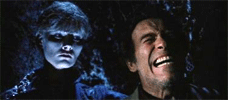
City of the Living Dead
1980 -
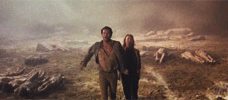
The Beyond
1981 -
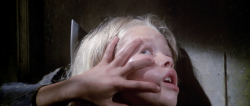
House by the Cemetery
1981 -
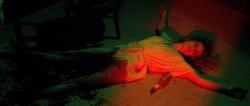
The New York Ripper
1982 -
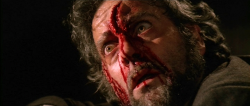
Manhattan Baby
1982 -
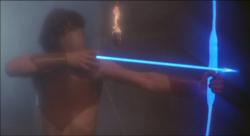
Conquest
1983
We don’t do comments anymore, but you may contact us here or find us on Twitter or Facebook.



